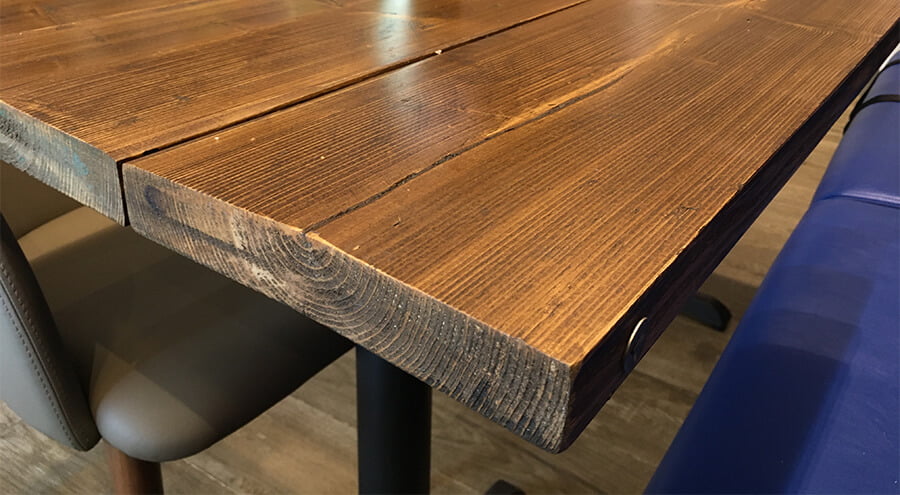There are a variety of substances that are mainly suitable for waxing scaffold boards such as oils and varnishes. Waxes give scaffold boards a great look and a smooth texture, each of these waxing methods has its pros and cons. For example, the oil will easily penetrate the scaffold boards while protecting the board’s outer part.

When using scaffold boards to make indoor furniture or raised beds, you can use either bee’s wax, paraffin wax, or carnauba wax. Wax gives a beautiful, smooth shine and can easily be re-buffed, making it suitable for furniture. With wax, you’ll need to reapply after a while. It’s also mildly water-resistant and easy to apply.
Even though wax accentuates the tone of the board, you don’t have to clean it when reapplying because you can just apply it over the old layer. The type of wax you choose depends on how you intend to use the furniture or whatever you’re making with the scaffold boards.
Benefits of waxing scaffold boards
Wax fills the pores of the scaffold boards after application. Waxed boards can easily be cleaned although they have a lesser resilience to water as compared to oils. Wax helps in accentuating the character of the scaffold boards and leaves a smooth shiny surface on the board.
On the other hand, varnishes remain on the outer side of the board and give a tough coating and a durable surface which is ideal for the board and helps it last for an extended period.
Before the application of wax, the surface must be thoroughly cleaned. Once applied it is left for a few hours to allow the wax to cure. It also helps it last for a long time since it gets into the board and treats it.

Benefits of using oils on scaffold boards
Oils such as danish oil are also used in waxing scaffold boards since it penetrates well and gives it an even finish without altering the look of the scaffold board too much.
Oil is easy to apply; with a simple brush and excess oil is removed using a rag. For scaffold boards which tend to be rougher than others, danish oil helps in penetrating the surface, whereas wax and varnish may not.
Oil is more resilient to water as compared to wax but it takes a long period of application. Oil allows any dust and nibs to be removed from the surface of the boards without strain. Moreover, an oil finish has a lesser effect on the final texture of the scaffold boards and is the best tactile quality of scaffold boards that make them durable.